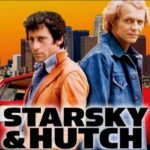The sci-fi TV series Lost in Space first air in 1965. It ran for a total of three seasons and 83 episodes before its eventual end in 1968. The show was both created and produced by Irwin Allen, who had a passion for sci-fi. Before Lost in Space first aired, Irwin Allen also created the TV series Voyage to the Bottom of the Sea, which ran from 1964 to 1968.
Lost in Space, however, was unique from other sci-fi shows at the time. All 29 episodes of the first season of Lost in Space film solely in black and white. But in seasons 2 and 3, the film changed to vibrant color. The color wasn’t the only thing about the show that changed. The tone of the show shifted drastically between seasons. At the time, what is popular on TV is changing rapidly. Irwin Allen knew the show would have to change in order to adapt. This helped keep the show running until it ended in 1968. Allen chose to keep Lost in Space the same as it was during the first season. It would have surely grown out of fashion and ended up getting canceled prematurely.
The Robinsons
The constant changes to the tone of the series made it more interesting television shows of the time period. The show focused on a family called the Robinsons, a zany family who pioneered the vast reaches of outer space. The first season is more adventurous. The second season introduced more campy humor to keep up with new fashions and trends in television. By the third season, Lost in Space underwent a complete change. Rather than having each episode contribute to a larger arc, they became more anecdotal in nature. In this format, each episode brought a new adventure to the Robinson family as they traveled through outer space.
Of course, no matter how religiously you may watch this show, there are bound to be a few fun facts that you never know. In today’s video, we’re going to take a look at some of the wild things that went on behind the scenes. Make sure you stick around until the very end, where we’ll reveal which famous composer spent his early days working on the show’s theme song! Before we get started, be sure to leave a like on this video, and don’t forget to subscribe and click that notification bell so you can stay up to date with all of our videos!
Facts Verse Presents: 12 Facts About Lost in Space that Are Out of This World
It’s Undecided When Jupiter 2 Launched
In the pilot episode called “No Place to Hide,” the Robinson family launches their ship, Jupiter 2, into the nearby star system Alpha Centauri. During that episode, the date is clearly printed as October 16, 1997. This seems reasonable enough, especially to audiences in 1965. The one who envisioned far more advanced technology as the turn of the century arrived. However, just one episode later, the show seems to contradict itself. In “The Derelict,” John Robinson writes in his journal, that the date as “October 21 in the Earth year 1997.” He then goes on to explain that it is still within the first 24 hours since the Jupiter 2 launched. We may never know whether Jupiter 2 launched on October 16th or on October 20th.
It Was Adapted from a Comic Book
The idea for Lost in Space came from the 1962 Gold Key Comics comic book entitled Space Family Robinson. Irwin Allen inspires by the comic book, and he managed to strike a deal with Gold Key, who ultimately conceded to changing the title of the comic to Lost in Space. Even more interestingly, however, is the origin of the comic itself. Space Family Robinson adapts from a novel released in 1812, known as The Swiss Family Robinson. So if you think about it, the show was really an adaptation of an adaptation.
The Series Wasn’t Afraid to Recycle
Creating a TV show is expensive, especially when you have a bunch of sci-fi props to make. The crew had a great way of reducing these expenses. Many robot models were often repainted and touched up to be used in future episodes. For example, a long-range scanner uses in the episode “The Derelict,” but the same model uses in two other episodes: “The Ghost Planet” and “Deadliest of the Species.” The crew’s frugal tendencies became a great example of reusing materials. Click the like button if you’re impressed by how the design team was able to reuse the same model over several episodes!
They Weren’t Always Cheap
While the crew wanted to cut costs in some areas, they were more than willing to spend money where it really mattered. The Jupiter 2 spaceship cost a whopping $350,000 to make which, adjusted for today’s time, is about $2.5 million! The creation of Jupiter 2 ended up costing even more than Star Trek’s USS Enterprise! In the fictional world of Lost in Space, Jupiter 2 was even more expensive. The spaceship supposedly cost the Robinson family a sum of $30 billion.
The Producer Later Made a TV Version of The Swiss Family Robinson
The comic book that inspired the show Lost in Space was first adapted from the 1812 novel The Swiss Family Robinson. While Irwin Allen had a lot of fun producing and creating Lost in Space, he clearly wanted to create an adaptation that was closer to the original. On September 14, 1975, Irwin Allen released the TV movie The Swiss Family Robinson. The film starred actors Martin Milner, Willie Aames, and Helen Hunt.
The Jupiter 2 Was Made Using Real Computers
Irwin Allen wanted the set to feel as futuristic as possible, and he made sure that the Jupiter 2 spaceship included real computers to complete the atmosphere. Allen was a fan of the technology company Burroughs, particularly their B205 model. It was covered in little lights and knobs that would look at home in any futuristic spaceship. Irwin Allen didn’t just use Burroughs in Lost in Space, however; he included a few of their computers in his later TV shows, as well.
Lost in Space Might Exist in the Same Universe as Star Trek
Part of what makes science fiction so fun is all of the made-up elements and metals the writers get to create. Lost in Space was no exception. The Jupiter 2 was said to be made of titanium and cosmium, and while titanium is very much real, cosmium is completely made-up. Furthermore, the ship was also said to run on a fuel known as deutronium. This same name was mentioned as an important resource in the Stark Trek: The Next Generation novel Triangle: Izmadi II.
The Costume Design Won an Award
The Costume Designers Guild presented designer Paul Zastupnevich with the award for “Best Dressed TV Series” in 1968. Zastupnevich used a lot of innovative ideas to capture the sci-fi ambiance of the show, and the Costume Designers Guild clearly agreed that he’d accomplished it. While his designs evolved over the seasons as he came up with better ideas, even the first season of Lost in Space was filled with eye-catching costumes. His secret? Plenty of shiny, silver fabrics!
Jonathan Harris Remained a “Special Guest Star” Even After He Became a Lead Character
Usually, the phrase “Special Guest Star” is reserved for actors who only appear in a few episodes. At first, Jonathan Harris’s character Dr. Zachary Smith wasn’t meant to stick around for too long. At first, he played the villain who thwarted the Robinson family. However, the show grew more comedic over the seasons, and Dr. Zachary Smith became the perfect character to incite humorous shenanigans. Despite his growth as a more central character to the series, Jonathan Harris’s character intro always mentioned him as a “Special Guest Star.”
The Robot Costume Was Both Huge and Expensive
The character Robot B-9 was played by Bob May, a gifted stuntman. However, he only got the role because he was able to fit in the carefully designed fiberglass suit. Robert Kinoshita designed the suit himself, and it ended up costing $70,000 to make. Even crazier is the fact that the suit weighed nearly 200 pounds.
The Show Had Some of the Weirdest Characters
Lost in Space was known for some pretty wild episodes, but none were quite as infamous as “The Great Vegetable Rebellion.” The writer, Peter Packer, was afraid to present it, he felt so unsure of his ideas. In this episode, all of the main characters were transformed into various plants by a ridiculous giant carrot that talks. The episode was almost made even weirder by adding a llama. Unfortunately, the live llama that they brought on set wouldn’t stop spitting at the crew, and they decided it was best to cut him from the script.
The Theme Song Was Composed by John Williams
Perhaps one of the most famous composers today, John Williams was only 33 years old when he was commissioned to create the theme song for Lost in Space. At the time, John Williams preferred to go by Johnny, and this was well before he worked on such gems as Star Wars and E.T. the Extraterrestrial.
Lost in Space is one of the more experimental TV shows of the 1960s, and it only lasted three seasons before it was canceled. Do you wish the show had lasted longer, or do you think it was better off ending when it did? Let us know in the comments below! And don’t forget to subscribe to Facts Verse for more!


